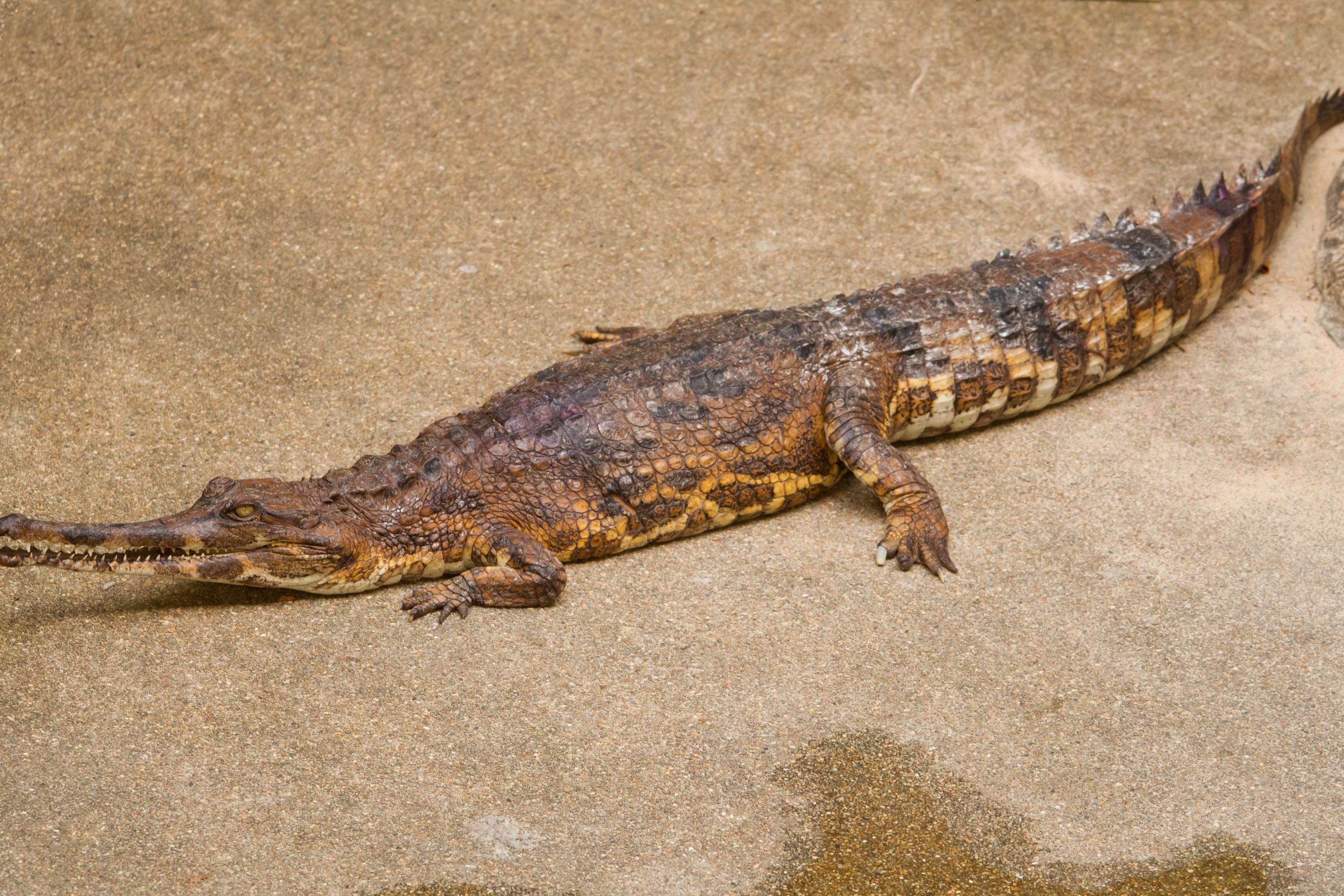False gharial
(Tomistoma schlegelii)

Description
The false gharial (Tomistoma schlegelii), also known by the names Malayan gharial, Sunda gharial and tomistoma is native to Peninsular Malaysia, Borneo, Sumatra and Java. This freshwater crocodilian in the family Gavialidae is listed as Vulnerable on the IUCN Red List, as the global population is estimated at around 2,500 to 10,000 mature individuals. The specific name schlegelii honors Hermann Schlegel. The scientific name Crocodilus (Gavialis) schlegelii was proposed by Salomon Müller in 1838 who described a specimen collected in Borneo. In 1846, he proposed to use the name Tomistoma schlegelii, if it needs to be placed in a distinct genus. The genus Tomistoma potentially also contains several extinct species like T. cairense, T. lusitanicum, T. taiwanicus, and T. coppensi. However, these species may need to be reclassified to different genera as are paraphyletic. The false gharial's snout broadens considerably towards the base and so is more similar to those of true crocodiles than to the gharial (Gavialis gangeticus), whose osteology indicated a distinct lineage from all other living crocodilians. However, although more morphologically similar to Crocodylidae based on skeletal features, recent molecular studies using DNA sequencing consistently indicate that the false gharial and by inference other related extinct forms traditionally viewed as belonging to the crocodylian subfamily Tomistominae actually belong to Gavialoidea and Gavialidae. Fossils of extinct Tomistoma species have been found in deposits of Paleogene, Neogene, and Quaternary ages in Taiwan, Uganda, Italy, Portugal, Egypt and India, but nearly all of them are likely to be distinct genera due to older age compared to the false gharial. False gharials are native to Peninsular Malaysia, Sarawak, and Indonesia (Sumatra, and Borneo), but were extirpated in Singapore, Vietnam, and Thailand. It is unclear if they remain in Java. Apart from rivers, they inhabit swamps and lakes. The species is almost entirely found today in peat swamps and lowland swamp forests. In the 1990s, information and sightings were available from 39 localities in 10 different river drainages, along with the remote river systems of Borneo. Prior to the 1950s, Tomistoma occurred in freshwater ecosystems along the entire length of Sumatra east of the Barisan Mountains. The current distribution in eastern Sumatra has been reduced by 30-40% due to hunting, logging, fires, and agriculture.
Taxonomic tree:







